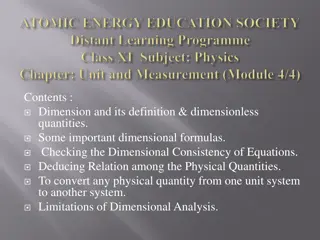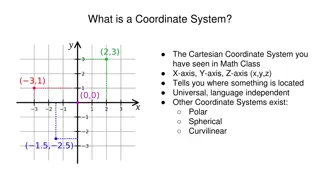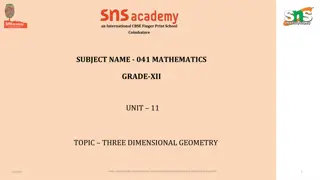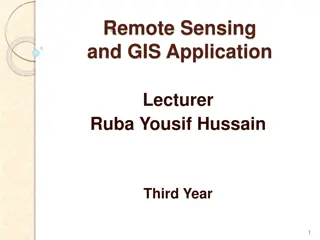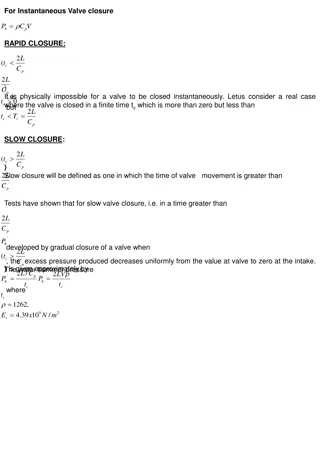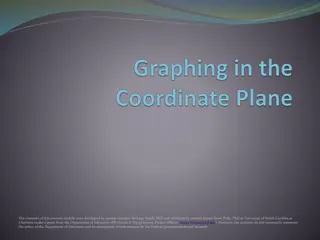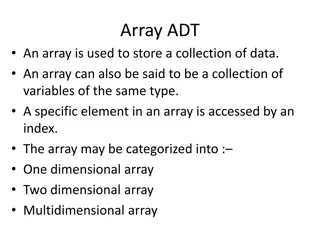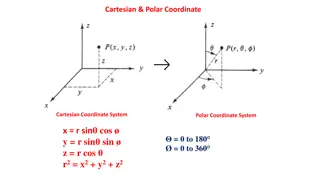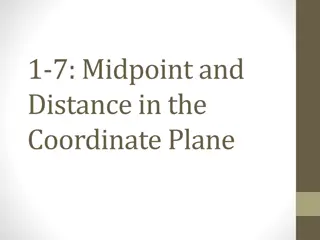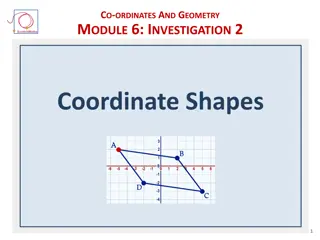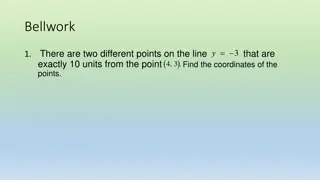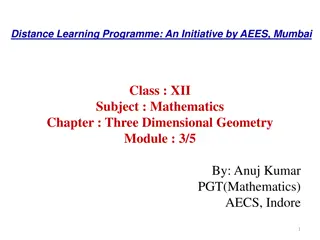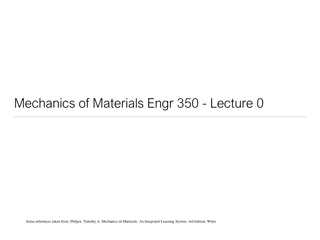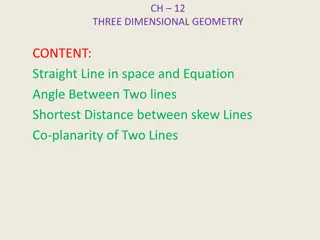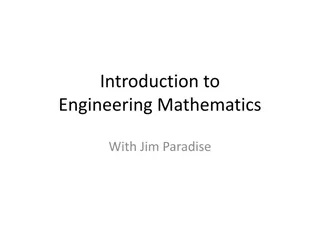Understanding Three-Dimensional Coordinate Systems in Engineering Mathematics
Exploring how points are located in a plane and in space using ordered pairs and triples of real numbers, respectively. Discusses the use of coordinate axes, orientation, and the right-hand rule in representing points in three-dimensional space.
Download Presentation

Please find below an Image/Link to download the presentation.
The content on the website is provided AS IS for your information and personal use only. It may not be sold, licensed, or shared on other websites without obtaining consent from the author. Download presentation by click this link. If you encounter any issues during the download, it is possible that the publisher has removed the file from their server.
E N D
Presentation Transcript
DIYALA UNIVERSITY COLLEGE OF ENGINEERING DEPARTMENT OF COMMUNICATIONS ENGINEERING Mathematics- II ?????????? First Year lecturer Wisam Hayder 2021 1
Vectors and the Geometry of Space Three-Dimensional Coordinate Systems To locate a point in a plane, two numbers are necessary. We know that any point in the plane can be represented as an ordered pair (a, b) of real numbers, where a is the x- coordinate and b is the y-coordinate. For this reason, a plane is called two-dimensional. To locate a point in space, three numbers are required. We represent any point in space by an ordered triple (a, b, c) of real numbers. 2
Vectors and the Geometry of Space In order to represent points in space, we first choose a fixed point O (the origin) and three directed lines through O that are perpendicular to each other, called the coordinate axes and labeled the x-axis, y-axis, and z-axis. Usually we think of the x- and y-axes as being horizontal and the z-axis as being vertical, and we draw the orientation of the axes as in Figure 1. 3
Vectors and the Geometry of Space The direction of the z-axis is determined by the right-hand rule as illustrated in Figure 2: If you curl the fingers of your right hand around the z- axis in the direction of a 90 counterclockwise rotation from the positive x-axis to the positive y-axis, then your thumb points in the positive direction of the z-axis. 4
Vectors and the Geometry of Space The three coordinate axes determine the three coordinate planes illustrated in Figure 3(a). The xy- plane is the plane that contains the x- and y-axes; the yz-plane contains the y- and z-axes; the xz-plane contains the x- and z-axes. These three coordinate planes divide space into eight parts, called octants. The first octant, in the foreground, is determined by the positive axes. 5
Vectors and the Geometry of Space Example 1 What points P(x, y, z) satisfy the equations 12
Vectors and the Geometry of Space Distance and Spheres in Space 13
Vectors and the Geometry of Space Example 2 We interpret these equations and inequalities geometrically. 14
Vectors and the Geometry of Space Ex. 3. Give a geometric description of the set of points in space whose coordinates satisfy the given pairs of equations (1) x = 2, y = 3, (2) x = -1, z = 0, (3) y = 0, z = 0, (4)??+ ??= ?, z = 0, (5) ??+ ??+ ??= ?, x = 0 . Sol. 1. The line through the point (2,3,0) parallel to the z-axis. 2. The line through the point (-1,0,0) parallel to the y-axis. 3. The x-axis 4. The circle ??+ ??= ? in the xy-plane. 5. The circle ??+ ??=1 in the yz-plane 15
Vectors and the Geometry of Space Ex3. Describe the sets of points in space whose coordinates satisfy the given inequalities or combinations of equations and inequalities. 1. 2. Sol. 1. (a) The first quadrant of the xy-plane. (b) The fourth quadrant of the xy-plane. 2. (a) The slab bounded by the planes x = 0 and x = 1 (b) The square column bounded by the planes x= 0, x =1, y =0, y = 1 (c) The unit cube in the first octant having one vertex at the origin 16
Vectors and the Geometry of Space Ex 4. Find the centers and radius of the spheres. 1. 2. Sol. 1. center (-2, 0, 2), radius 2 2. 2. center (1, 1 2, 3 ), radius 5 17
Vectors Component Form A quantity such as force, displacement, or velocity is called a vector and is represented by a directed line segment (Figure 12.7). The arrow points in the direction of the action and its length gives the magnitude of the action in terms of a suitably chosen unit. 18
Vectors For example, a force vector points in the direction in which the force acts and its length is a measure of the force s strength; a velocity vector points in the direction of motion and its length is the speed of the moving object 19
Vectors Figure 12.8 displays the velocity vector v at a specific location for a particle moving along a path in the plane or in space. 20
Vectors The arrows we use when we draw vectors are understood to represent the same vector if they have the same length, are parallel, and point in the same direction (Figure 12.9) regardless of the initial point. 21
Vectors 22
Vectors 23
Vectors 24
Vectors Vector Algebra Operations 25
Vectors 26
Vectors 27
Vectors 28
Vectors 29
Vectors 30
Vectors 31
Vectors 32
Vectors The Dot Product 33
Vectors 34
Vectors Perpendicular (Orthogonal) Vectors 35
Vectors 36
Vectors 37
Vectors 38
Vectors 39
Vectors 40
Vectors 41
Vectors 42


